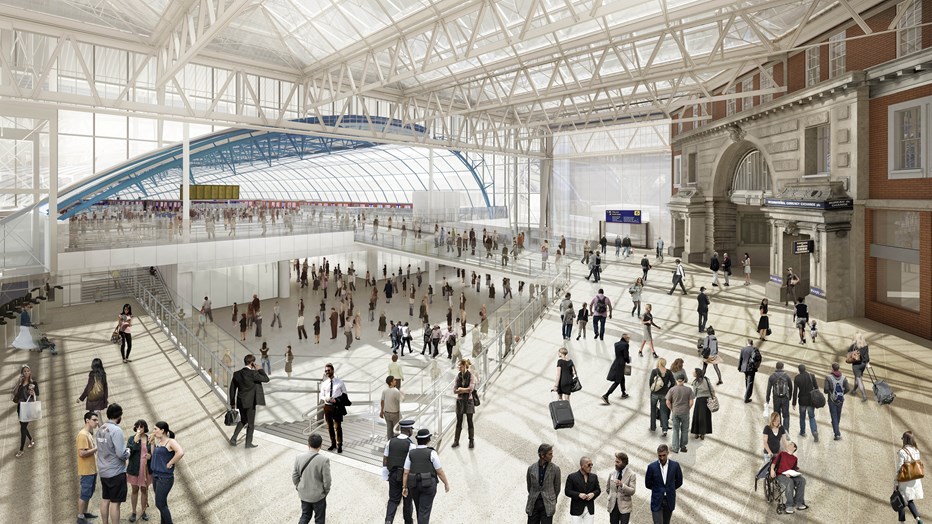Skanska played a key role in the expansion of London Waterloo, to increase its capacity by 30 per cent.
We worked as part of an alliance to deliver the scheme, together with Aecom, Colas Rail and Mott MacDonald.
As part of the project, the alliance also improved outlying stations and rail systems.
The redevelopment of Waterloo station was a major civil engineering infrastructure, and mechanical and electrical engineering, project.
Connecting communities
Waterloo is the busiest railway station in the UK, used by millions of people in the UK every year. The main railway line to the south-west of England operates out of the station.
The main focus of the station redevelopment was to significantly increase train capacity. Four of the existing platforms were lengthened to allow for ten-carriage trains. The former international terminal was rebuilt, with its platforms reconfigured so that they could be used by commuter trains.
The project involved a partial closure of the station, to allow construction – together with mechanical and electrical fit out work – to take place.
A complex civil engineering project
At the height of the Waterloo improvement scheme over 1,300 people were working on the project.
At one point, work was carried out 24 hours a day, seven days a week.
This was a technically challenging project, that was carefully planned, in order to cause a minimum of disruption to the travelling public.
Planning for the partial shutdown of the station – which took place in the summer of 2017 – began over a year before the closure.
A significant amount of mechanical and electrical fit out work took place in the two months before the closure, to ensure that the platforms in the international station could be brought back into use.
The upgrade to Waterloo station was one of the largest and most complex in its history.
Significant changes to the fabric of the whole station were required, in addition to the lengthening of the existing platforms.
A huge amount of civil engineering work took place in order to make all the changes.
A major fit out
Skanska also carried out – and was heavily involved in the design of – the full mechanical, electrical and public health fit out at the redevelopment of Waterloo station.
This was a significant part of the whole project, as the station required the installation of extensive mechanical and electrical infrastructure.
For example, we installed over 100km of cabling, together with 20km of cable management systems, over a 14-week period. We also installed around 5km of ductwork.
The work involved everything from the customer departure boards to ventilation and CCTV systems. All the new equipment had to be integrated with the existing systems at Waterloo.
A large number of existing services – such as electrical supplies – had to be moved as part of the project, because of the significant reconfiguration of the station.
Specialist ceiling expertise
We also designed and installed the special curved ceiling on an underground hallway between the main station and London Underground.
We used our expertise to turn the architect’s vision into a practical solution.
This involved the creation of bespoke aluminium ceiling panelling – each panel was unique – as the ceiling curves in three different directions.

